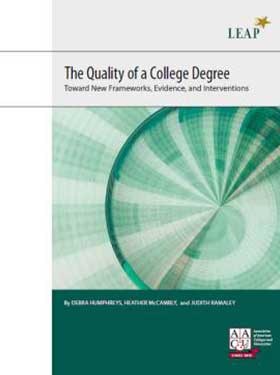I had the great fortune in my time at the Association of American Colleges and Universities to be a part of the Quality Collaboratives, a project spanning nine states and 11 institutional dyads (i.e. partnered two-year and four-year public institutions) to test the Degree Qualification Profile as a framework for the assessment and documentation of student learning outcomes in the context of transfer.
Evaluating the work of these community college and university partners, as well as their state policy context, brought out many important insights about how documented student learning outcomes (rather than credit hours or seat time) could be used to reframe transfer practices and policies in a way better suited to today’s mobile and swirling student populations. The project also revealed the extensive groundwork that must be laid in terms of collaboration across community colleges and four-year partners in order to think systemically about how students’ demonstrations of learning might be used as the currency for more efficient, effective, and equitable transfer policy and practice. Some of these findings are outlined in the recently released report, "The Quality of a College Degree: Toward New Frameworks, Evidence, and Interventions," that I had the pleasure of coauthoring with Debra Humphreys and Judith Ramaley.
We observed that as “the college completion agenda continues to dominate policy discussions, we have arrived at a moment of potential convergence: efficiency, improved completion rates, and higher levels of student achievement do not have to be mutually exclusive goals. All three of these goals are important to the future of postsecondary institutions, and one goal should not be sacrificed for another.” And perhaps most importantly, without crafting policies and measurements that place value and resources behind achieving equity for low-income students, first-generation students, students of color, and other underserved students, we cannot achieve our goals or our purpose in community colleges and public universities to provide pathways to economic opportunity.
But where do we begin to place learning and equity at the center of our extremely complex systems of credentialing and transfer? Tell us—how does student learning fit into your assessments or your transfer pathways? Do you think about student learning as an equity issue?
Heather McCambly leads the Pathways to Results Initiative at the Office of Community College Research and Leadership (OCCRL).
